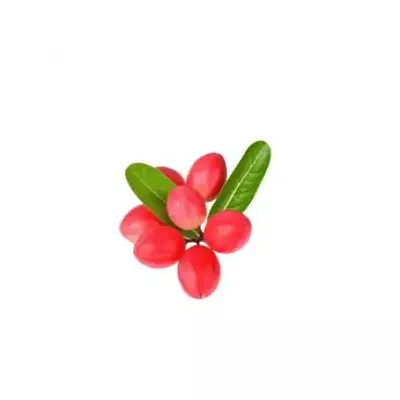



Cherry used for bakery purpose is processed Karonda cherry and hence the plant is also called Bakery Cherry plant. It is also used for making pickles, preserving in brine or making wine.

Pay using UPI, Card or Netbanking

Shipping within 3 working days
The bakery cherry, Karonda or Karakka, as it is called in many parts of India, is a medium-sized thorny shrub that belongs to the family Apocynaceae.
The cherry tree starts flowering in October or November. It matures by early summer. It is a good practice to prune the tree after every harvest.
Karonda is a low-maintenance plant and requires minimal care. Bakery cherry can grow in a wide range of climatic conditions and soil types. It grows well in full sunlight and also in partial shade.
The karonda cherry does well with organic fertilizers. Bone meal, cow dung, and compost are used.
Karonda fruit is small, round, and red when ripe, with a diameter of about 1-2 cm. It is sour in taste with a slightly bitter aftertaste.
Karonda cherry is used for making pickles, chutneys, and curries; for preserving in brine; and for making wine. However, raw karonda fruit is unsuitable to consume directly.
The cherry used for bakery purposes undergoes processing, which makes it very sweet.
Karonda cherry is used as a natural dye for fabrics and wool. The fruit has a natural red dye that is extracted and used in textile industries.
Data sheet